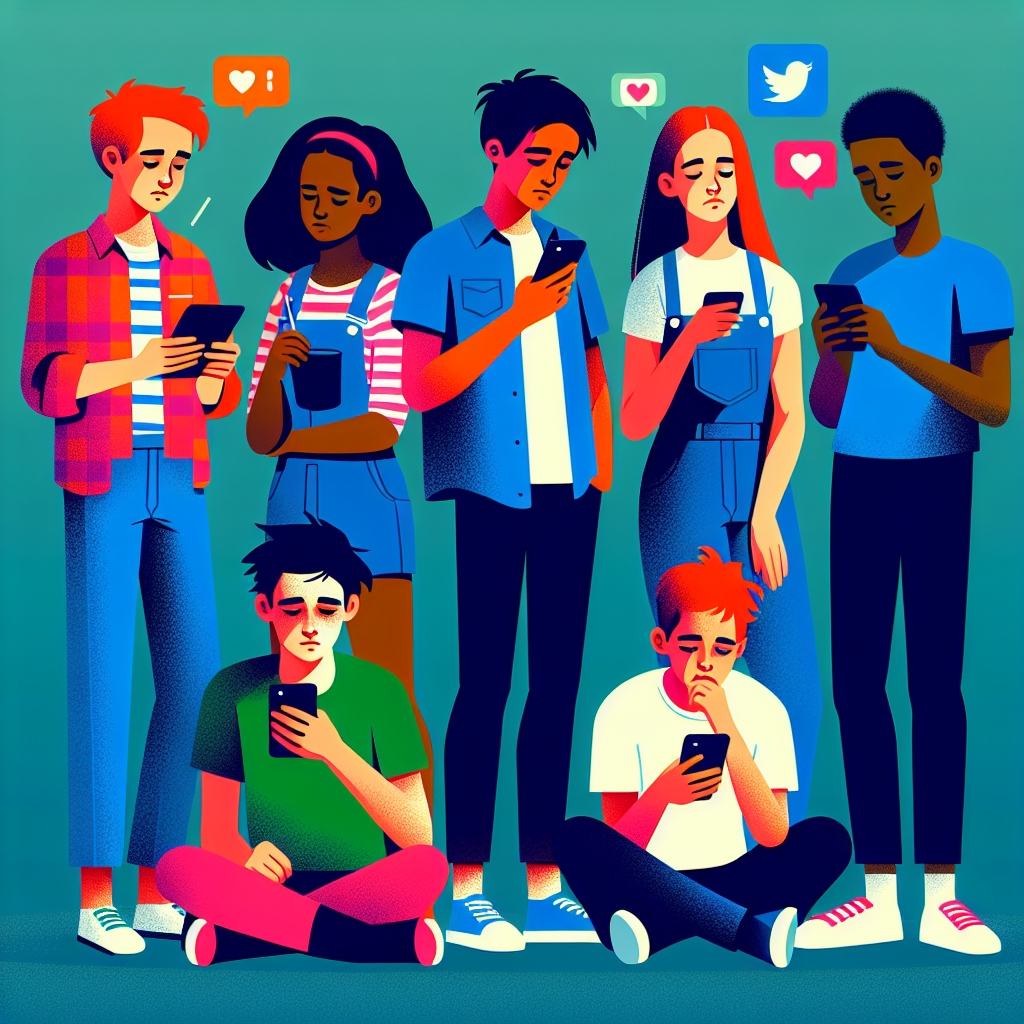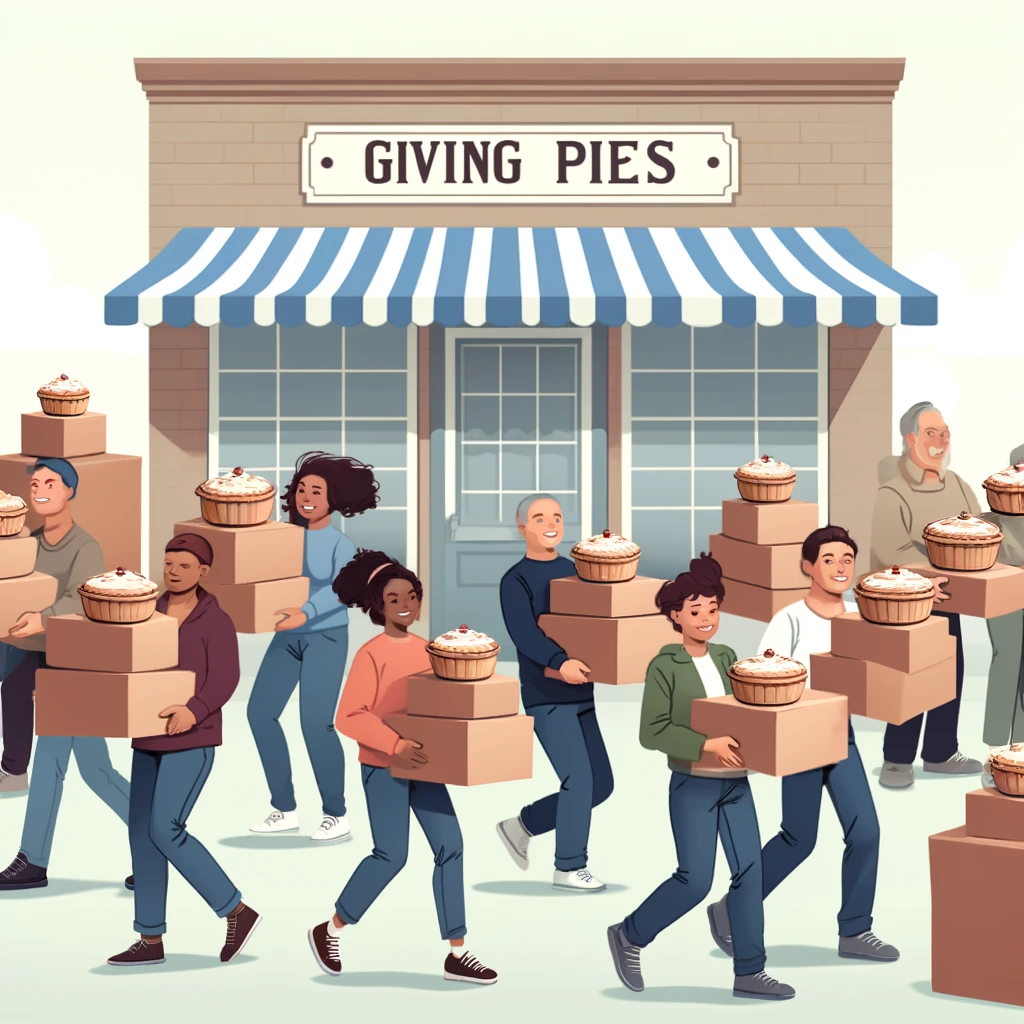A recent study involving nearly 280,000 teenagers from 44 countries showed that more young people are struggling with excessive social media use since the pandemic began. In 2022, 11% of the surveyed teens were found to be using social media in a concerning way, up from 7% in 2018. Countries like England, Scotland, and Wales reported even higher numbers, raising worries about how digital technology is affecting the mental health of European youth.
The study revealed that 13-year-olds, especially girls, were most likely to exhibit problematic social media behaviors. Many teens are spending a lot of time online, with a significant portion staying connected with friends throughout the day. While social media can help teens build friendships and support networks, those who show signs of addiction, like neglecting other activities or lying about their usage, are at risk of negative consequences like depression and anxiety.
The study also highlighted concerns about excessive gaming among teenage boys. The World Health Organization’s European branch stressed the importance of teaching young people how to use digital platforms responsibly. Dr. Hans Henri P Kluge emphasized the need for action from governments, health authorities, teachers, and parents to address the potential harm caused by too much social media use, which can lead to issues like bullying and poor school performance.
Even though it’s challenging to define what counts as “problematic social media use,” the study sheds light on an important issue. It calls on tech companies to improve privacy and parental control features to protect young users. The report emphasizes that social media has both positive and negative effects on teens, underscoring the importance of everyone working together to promote healthy online habits and ensure the well-being of young people in today’s digital world.
Original news source: Sharp rise in problematic teenage social media use, study says (BBC)
🎧 Listen:
Slow
Normal
Fast
📖 Vocabulary:
| 1 | excessive | More than what is necessary or normal |
| 2 | concerning | Causing worry or anxiety |
| 3 | exhibit | To show or display something |
| 4 | neglecting | Failing to care for something properly |
| 5 | consequences | Results or effects of an action |
| 6 | emphasized | To give special importance to something |
| 7 | authorities | People or organizations in power or control |
| 8 | potential | Possible or capable of happening |
| 9 | bullying | Intentionally hurting or frightening someone weaker |
| 10 | challenging | Difficult or hard to do |
| 11 | privacy | The state of being free from being observed or disturbed by others |
| 12 | parental | Related to parents |
| 13 | promote | To support or encourage something |
| 14 | well-being | The state of being comfortable, healthy, or happy |
| 15 | digital | Related to technology or computers |
Group or Classroom Activities
Warm-up Activities:
– News Summary
Instructions: Have students read the article individually and then summarize the main points to their partner in 2-3 minutes. Encourage them to focus on the key information and main ideas.
– Think-Pair-Share
Instructions: Ask students to think about their own opinions on social media use among teenagers. Then, have them pair up with a classmate to discuss their thoughts. Finally, open up the discussion to the whole class for sharing different perspectives and ideas.
– Opinion Poll
Instructions: Create a list of statements related to social media use and teenagers based on the article. Have students move around the room and ask their classmates for their opinions on each statement. Encourage them to engage in discussions and debates about the different viewpoints.
– Synonym Challenge
Instructions: Write down key vocabulary words from the article on the board. In pairs or small groups, challenge students to come up with as many synonyms as they can for each word within a time limit. This activity will help reinforce their vocabulary and expand their word choices.
– Sketch It
Instructions: Choose a few key points from the article and assign each point to a different group of students. Ask them to sketch out the main idea on a piece of paper or mini whiteboard. After a few minutes, have each group present their sketches to the class and explain the main concept they depicted.
🤔 Comprehension Questions:
1. What did a recent study involving almost 280,000 teenagers from 44 countries reveal about social media use during the pandemic?
2. Which age group and gender were found to be most likely to display concerning social media behaviors according to the study?
3. Besides social media, what other digital activity raised concerns in the study, especially among teenage boys?
4. According to the World Health Organization’s European branch, who needs to take action to address the potential harm of excessive social media use among young people?
5. Why are some teenagers at risk of negative consequences like depression and anxiety due to their social media use?
6. What are some signs of addiction to social media mentioned in the study?
7. Why is it important for tech companies to improve privacy and parental control features for young users, according to the report?
8. How does the study emphasize the importance of everyone working together to promote healthy online habits among teens?
Go to answers ⇩
🎧✍️ Listen and Fill in the Gaps:
A recent study involving nearly 280,000 teenagers from 44 countries showed that more young people are (1)______ with (2)______ social media use since the (3)______ began. In 2022, 11% of the surveyed teens were found to be (4)______ social media in a concerning way, up from 7% in 2018. Countries like England, Scotland, and Wales reported even higher numbers, raising worries about how digital technology is affecting the mental health of European youth.
The study revealed that 13-year-olds, especially girls, were most likely to exhibit problematic social media behaviors. Many teens are spending a lot of time online, with a significant portion staying connected with (5)______ throughout the day. While social media can help teens build friendships and (6)______ networks, those who show signs of (7)______, like neglecting other activities or lying about their (8)______, are at risk of negative consequences like depression and anxiety.
The study also (9)______ concerns about excessive gaming among teenage boys. The World Health Organization’s European branch stressed the importance of (10)______ young people how to use digital platforms responsibly. Dr. Hans (11)______ P Kluge emphasized the need for action from governments, health authorities, teachers, and parents to address the potential harm caused by too much social media use, which can lead to issues like bullying and poor (12)______ performance.
Even though it’s challenging to define what counts as “problematic (13)______ media use,” the study sheds light on an important issue. It calls on tech companies to improve (14)______ and parental control features to protect (15)______ users. The report emphasizes that social media has both positive and (16)______ effects on teens, underscoring the importance of everyone working together to promote healthy online habits and ensure the well-being of young people in today’s digital world.
Go to answers ⇩
💬 Discussion Questions:
Students can ask a partner these questions, or discuss them as a group.
1. What is social media addiction, and why do you think more teenagers are struggling with it now?
2. How would you feel if you had a friend who was constantly lying about their social media use?
3. Do you think spending too much time on social media can affect your mental health? Why or why not?
4. Why do you think 13-year-old girls are more likely to show problematic social media behaviors?
5. What are some positive ways that social media can help teenagers, besides staying connected with friends?
6. Do you like the idea of having parental controls on social media platforms? Why or why not?
7. How do you think excessive gaming can impact teenage boys’ lives?
8. What do you think responsible use of digital platforms looks like for teenagers?
9. Why do you think it’s important for everyone – governments, health authorities, teachers, and parents – to work together to address social media issues?
10. How do you think social media can contribute to bullying among teenagers?
11. What are some signs that someone may be addicted to social media, according to the article?
12. Why do you think it’s hard to define what counts as “problematic social media use”?
13. How can tech companies improve privacy features on social media platforms to protect young users?
14. Do you think it’s possible to have a healthy balance between using social media and other activities? Why or why not?
15. How can teenagers promote healthy online habits among their peers?
Individual Activities
📖💭 Vocabulary Meanings:
Match each word to its meaning.
Words:
1. excessive
2. concerning
3. exhibit
4. neglecting
5. consequences
6. emphasized
7. authorities
8. potential
9. bullying
10. challenging
11. privacy
12. parental
13. promote
14. well-being
15. digital
Meanings:
(A) The state of being free from being observed or disturbed by others
(B) Difficult or hard to do
(C) Related to parents
(D) Intentionally hurting or frightening someone weaker
(E) Related to technology or computers
(F) To support or encourage something
(G) Causing worry or anxiety
(H) Possible or capable of happening
(I) To give special importance to something
(J) More than what is necessary or normal
(K) The state of being comfortable, healthy, or happy
(L) Failing to care for something properly
(M) Results or effects of an action
(N) People or organizations in power or control
(O) To show or display something
Go to answers ⇩
🔡 Multiple Choice Questions:
1. What percentage of teenagers were found to be using social media in a concerning way in 2022?
(a) 5%
(b) 11%
(c) 15%
(d) 20%
2. Which age group was most likely to exhibit problematic social media behaviors according to the study?
(a) 13-year-olds
(b) 16-year-olds
(c) 18-year-olds
(d) 20-year-olds
3. Which gender was mentioned as being more likely to show signs of addiction to social media?
(a) Boys
(b) Girls
(c) Both equally
(d) It was not mentioned
4. What did the study reveal about excessive gaming among teenagers?
(a) It is not a significant issue
(b) Girls are more affected by it
(c) It was not mentioned in the article
(d) It is a concern, especially among boys
5. Who stressed the importance of teaching young people how to use digital platforms responsibly?
(a) Social media companies
(b) Teenagers themselves
(c) School teachers
(d) World Health Organization’s European branch
6. What did Dr. Hans Henri P Kluge emphasize the need for action from to address the potential harm of excessive social media use?
(a) Teenagers
(b) Social media influencers
(c) Governments, health authorities, teachers, and parents
(d) Tech companies
7. What did the study call on tech companies to improve to protect young users?
(a) Privacy and parental control features
(b) Number of ads shown
(c) Number of likes on posts
(d) Video quality on platforms
8. What did the report emphasize about social media’s effects on teens?
(a) It only has negative effects
(b) It only has positive effects
(c) It has both positive and negative effects
(d) It was not mentioned in the article
Go to answers ⇩
🕵️ True or False Questions:
1. The research indicated that 13-year-old boys were most likely to display problematic social media behaviors.
2. In 2022, 11% of the examined teens were utilizing social media in a troubling manner, down from 7% in 2018.
3. The report highlighted the necessity for tech companies to enhance privacy and parental control features to safeguard young users.
4. Countries like England, Scotland, and Wales reported even higher numbers of teens struggling with social media use.
5. The World Health Organization’s European branch stressed the importance of teaching young people how to use digital platforms responsibly.
6. The study called for action from governments, health authorities, teachers, and parents to address the potential harm caused by excessive social media use.
7. Excessive gaming among teenage boys was also a concern highlighted in the study.
8. A research with approximately 280,000 teenagers from 44 nations discovered that fewer young individuals are grappling with excessive social media use since the pandemic commenced.
Go to answers ⇩
📝 Write a Summary:
Write a summary of this news article in two sentences.
Check your writing now with the best free AI for English writing!
Writing Questions:
Answer the following questions. Write as much as you can for each answer.
Check your answers with our free English writing assistant!
1. What percentage of teenagers were found to be using social media in a concerning way in 2022, according to the study?
2. Why are concerns being raised about the impact of digital technology on the mental health of European youth?
3. Who was found to be most likely to exhibit problematic social media behaviors, according to the study?
4. What negative consequences can teens who show signs of social media addiction experience, as mentioned in the article?
5. What actions does the World Health Organization’s European branch suggest should be taken by governments, health authorities, teachers, and parents to address the potential harm caused by excessive social media use among teens?
✅ Answers
🤔✅ Comprehension Question Answers:
1. What did a recent study involving almost 280,000 teenagers from 44 countries reveal about social media use during the pandemic?
The study showed that more young people are struggling with excessive social media use since the pandemic began, with 11% of surveyed teens using social media in a concerning way in 2022, up from 7% in 2018.
2. Which age group and gender were found to be most likely to display concerning social media behaviors according to the study?
13-year-olds, especially girls, were most likely to exhibit problematic social media behaviors.
3. Besides social media, what other digital activity raised concerns in the study, especially among teenage boys?
Excessive gaming among teenage boys raised concerns in the study.
4. According to the World Health Organization’s European branch, who needs to take action to address the potential harm of excessive social media use among young people?
Governments, health authorities, teachers, and parents need to take action to address the potential harm of excessive social media use among young people.
5. Why are some teenagers at risk of negative consequences like depression and anxiety due to their social media use?
Teens who show signs of addiction to social media, like neglecting other activities or lying about their usage, are at risk of negative consequences like depression and anxiety.
6. What are some signs of addiction to social media mentioned in the study?
Neglecting other activities and lying about social media usage are mentioned as signs of addiction to social media in the study.
7. Why is it important for tech companies to improve privacy and parental control features for young users, according to the report?
It is important for tech companies to improve privacy and parental control features to protect young users from potential harm caused by excessive social media use.
8. How does the study emphasize the importance of everyone working together to promote healthy online habits among teens?
The study underscores the importance of everyone, including tech companies, governments, health authorities, teachers, and parents, working together to promote healthy online habits and ensure the well-being of young people in today’s digital world.
Go back to questions ⇧
🎧✍️✅ Listen and Fill in the Gaps Answers:
(1) struggling
(2) excessive
(3) pandemic
(4) using
(5) friends
(6) support
(7) addiction
(8) usage
(9) highlighted
(10) teaching
(11) Henri
(12) school
(13) social
(14) privacy
(15) young
(16) negative
Go back to questions ⇧
📖💭✅ Vocabulary Meanings Answers:
1. excessive
Answer: (J) More than what is necessary or normal
2. concerning
Answer: (G) Causing worry or anxiety
3. exhibit
Answer: (O) To show or display something
4. neglecting
Answer: (L) Failing to care for something properly
5. consequences
Answer: (M) Results or effects of an action
6. emphasized
Answer: (I) To give special importance to something
7. authorities
Answer: (N) People or organizations in power or control
8. potential
Answer: (H) Possible or capable of happening
9. bullying
Answer: (D) Intentionally hurting or frightening someone weaker
10. challenging
Answer: (B) Difficult or hard to do
11. privacy
Answer: (A) The state of being free from being observed or disturbed by others
12. parental
Answer: (C) Related to parents
13. promote
Answer: (F) To support or encourage something
14. well-being
Answer: (K) The state of being comfortable, healthy, or happy
15. digital
Answer: (E) Related to technology or computers
Go back to questions ⇧
🔡✅ Multiple Choice Answers:
1. What percentage of teenagers were found to be using social media in a concerning way in 2022?
Answer: (b) 11%
2. Which age group was most likely to exhibit problematic social media behaviors according to the study?
Answer: (a) 13-year-olds
3. Which gender was mentioned as being more likely to show signs of addiction to social media?
Answer: (b) Girls
4. What did the study reveal about excessive gaming among teenagers?
Answer: (d) It is a concern, especially among boys
5. Who stressed the importance of teaching young people how to use digital platforms responsibly?
Answer: (d) World Health Organization’s European branch
6. What did Dr. Hans Henri P Kluge emphasize the need for action from to address the potential harm of excessive social media use?
Answer: (c) Governments, health authorities, teachers, and parents
7. What did the study call on tech companies to improve to protect young users?
Answer: (a) Privacy and parental control features
8. What did the report emphasize about social media’s effects on teens?
Answer: (c) It has both positive and negative effects
Go back to questions ⇧
🕵️✅ True or False Answers:
1. The research indicated that 13-year-old boys were most likely to display problematic social media behaviors. (Answer: False)
2. In 2022, 11% of the examined teens were utilizing social media in a troubling manner, down from 7% in 2018. (Answer: False)
3. The report highlighted the necessity for tech companies to enhance privacy and parental control features to safeguard young users. (Answer: False)
4. Countries like England, Scotland, and Wales reported even higher numbers of teens struggling with social media use. (Answer: True)
5. The World Health Organization’s European branch stressed the importance of teaching young people how to use digital platforms responsibly. (Answer: True)
6. The study called for action from governments, health authorities, teachers, and parents to address the potential harm caused by excessive social media use. (Answer: True)
7. Excessive gaming among teenage boys was also a concern highlighted in the study. (Answer: True)
8. A research with approximately 280,000 teenagers from 44 nations discovered that fewer young individuals are grappling with excessive social media use since the pandemic commenced. (Answer: False)
Go back to questions ⇧













